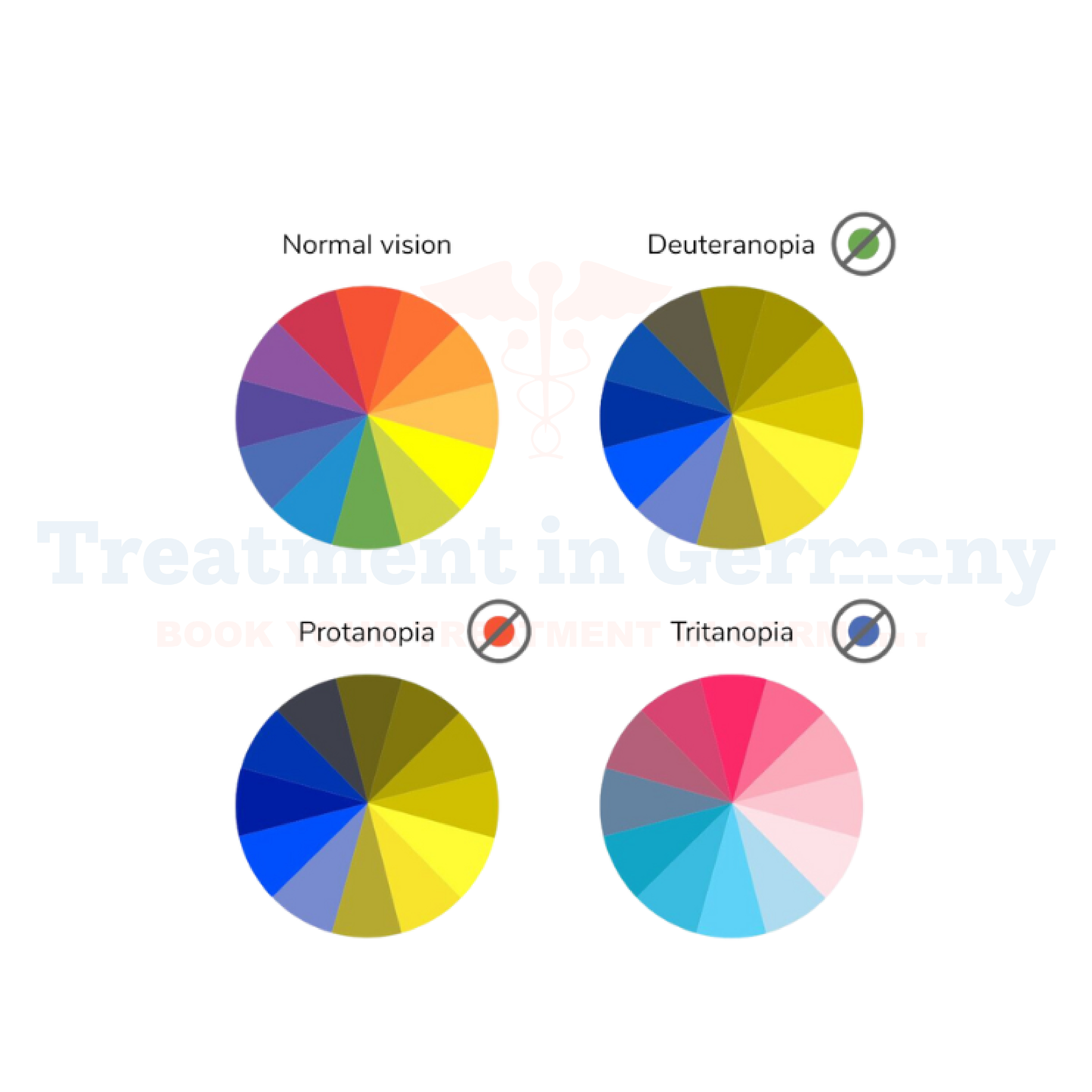Color blindness is known as color vision deficiency (CVD). Color blindness cannot be cured completely, but the progress we have made in technological and medical science. Germany is a preferred country since it undergoes unique healthcare standards and excellent innovations of solutions. This article goes further to explain the different forms of treatments found in Germany and how they further enhance the quality of life.
A very common disease known as color blindness (or color vision deficit) causes you to not see colors in the conventional sense. This occurs as a result of malfunctioning cones, a type of nerve cell found in the retina of your eye. Your brain receives signals from cones that interpret light and images as they enter your eye, enabling you to sense color.
Typically, being color blind does not imply that you are color blind. Although most people with color blindness can see a variety of colors, additionally, they could also find it difficult to distinguish between particular tones. A person who has some extremely rare types of color blindness is unable to see any color at all.
In the most prevalent red-green types of color blindness, this indicates that it is inherited from your biological parents, specifically the mother or birthing parent. However, medical disorders or other factors might also cause color vision deficiencies later in life.
It's critical to determine the kind and severity of color blindness if you or your child have it. Discuss the nature of the ailment and its potential effects with an ophthalmologist or optometrist.
Types of color blindness
Color blindness can be classified into many sorts based on the kinds of cones that aren't functioning properly.
Your eye's cones are nerve cells that are responsible for detecting colors in the visible light range. All of the wavelengths that are visible to humans are included in this spectrum. Their lengths vary from 700 nanometers (long) to 380 nanometers (short), or nm. You typically have three different kinds of cones from birth:
All three kinds of cones are present in most humans, and they function as intended. However, at least one kind of cone isn't functioning correctly if you have color vision.
Cone issues impair your ability to perceive color in the conventional sense. The following general categories illustrate the variety of cones you have and their effectiveness:
There are numerous distinct forms of color blindness under these broad categories.
Red-Green Color Deficiency
Red-green color blindness is the most common type of color blindness; it is an impairment of a person’s vision to spot colors or shades with red or green content. This condition is prevalent in Germany, and a large population of individuals does not know the restricted color perception.
There are four main subtypes:
Protanopia and deuteranopia are types of dichromacy, while protanomaly and deuteranomaly are anomalous trichromacy.
Blue-Yellow Color Deficiency
Blue-yellow color vision defects are less frequent but occur the same. Subtypes of blue-yellow color deficiency include:
Rare Forms of Color Blindness
The function of L and M cones is absent; people typically depend on S cones. This is a very uncommon disease, and its consequences may be quite serious vision impairments, including light sensitivity.
Causes of Color Blindness
Inherited and acquired factors both play roles:
Diagnosis of Color Blindness in Germany
They may not even know that they are having color vision problems. The diagnoses are always accompanied by tests such as the Ishihara test. Testing to detect these deficiencies is available in Germany and covers all areas of the country, revealing red-green and blue-yellow deficits.
Why choose Germany for the treatment of blindness?
Germany is the origin of highly developed technologies in the field of ophthalmology and can provide unique diagnoses and cures for color blindness. Germany offers accurate and individualized attention due to clinics, technologies, and talented professionals that can be found all over the world.
It is one of those establishments that focuses on the development of color vision therapies and patient-oriented medical tourism services and that’s why it offers customers the most effective and exhaustive treatment.
Frequently Asked Questions
In Germany, is it possible to ‘cure’ color blindness?
To inherited color blindness, Germany has solutions such as color vision enhancement glasses and contact lenses that make one’s color vision much better.
Do glasses to distinguish color work?
Of course, glasses like EnChroma can make people with mild to moderate color blindness distinguish colors much better. The intensity of the condition determines the outcome with different symptoms experienced.
Can gene therapy be prescribed in Germany?
Gene therapy is still mostly experimental, yet some early results are already being observed. The originating country for this research is Germany, and clinical trials are available to anyone who wants them.
In what way is the cost of treatment controlled in Germany?
Prices vary in relation to the treatment; however, as a rule, Germany has an insurance-oriented approach to the healthcare issue. Insurance should pay for the majority of the therapies for acquired color blindness.
Where can one get treatment in Germany?
Consult the best clinics in such locations as Berlin, Munich, or Hamburg to get an appointment. Some can also help out with travel arrangements and even the coordination of the trip.
👉 Contact us for further information and receive a complimentary consultation.

.webp)
.webp)
 (1).webp)
 (1).webp)

.webp)
.webp)
 (1).webp)
 (1).webp)
